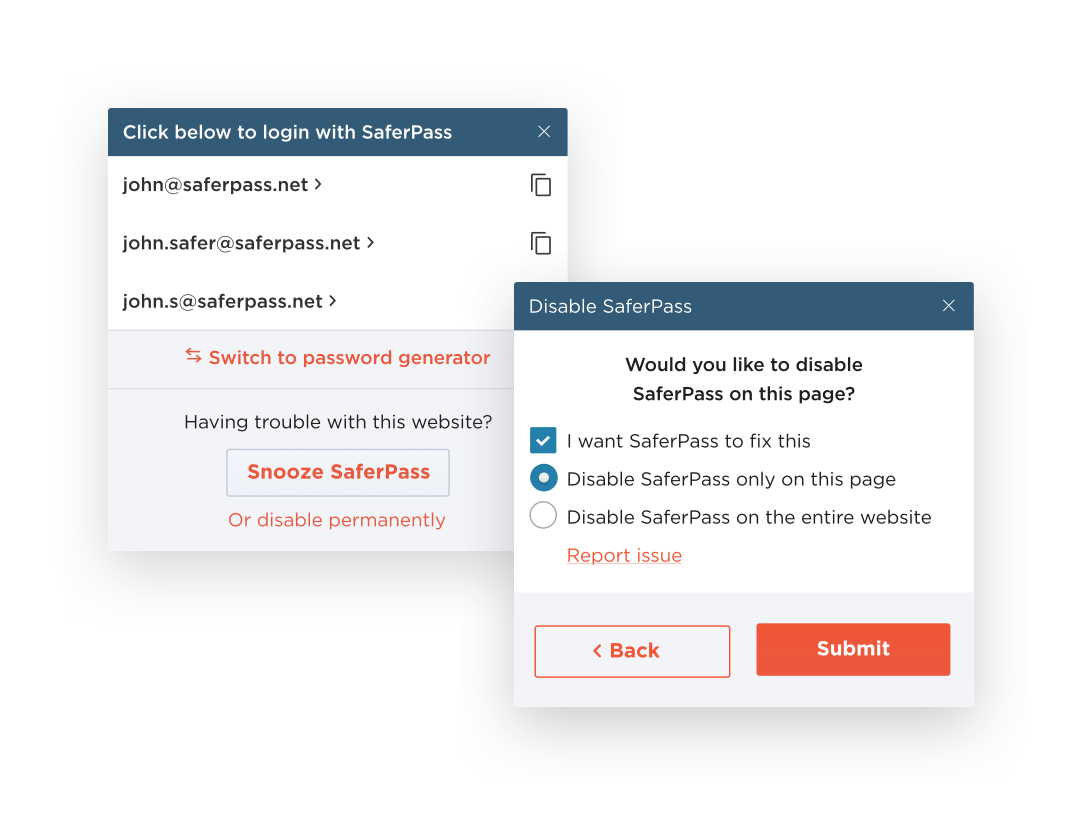
- #Saferpass chrome generator
- #Saferpass chrome code
- #Saferpass chrome password
- #Saferpass chrome Pc
#Saferpass chrome code
Some of the two-factor authentications it employs are reasonably commonplace, such as the use of the Google Authenticator or Authy to create a companion six-digit device code to the user’s master password. The company employs a zero-knowledge protocol, which means only the user ever knows and has access to their master password.
#Saferpass chrome password
SaferPass stores password data locally on your machine, protected with a master password, several forms of device-based two-factor authentication and modern cryptographic technology including AES 256-bit encryption and salted password hashing. Let’s have a look at how SaferPass measures up in each of these categories.
Pricing is the factor that measures the extent of value you’re getting for your dollar. Password sharing, done securely, provides flexibility for multiple users to access the same accounts when it proves necessary. Usability makes it possible for users in your home or business to employ the password manager efficiently without needing to have an IT degree or other special training. App compatibility is important to ensure that your manager syncs and works seamlessly across multiple devices and platforms. #Saferpass chrome generator
Security and encryption of your password data is job one, and the approach of a password generator worth using should be fully up to date. In addition to hijacking traffic and driving users to questionable affiliate programs, we have also observed them gathering and exfiltrating Cloudflare credentials, providing the actors with new means of potential future attacks,” Proofpoint concludes.The password management market is crowded with companies making plenty of promises, so our method is to focus on a few core features to make informed comparisons easier: Once they obtain developer credentials through emailed phishing campaigns, they can publish malicious versions of legitimate extensions. “In the cases described here, they are leveraging compromised Chrome extensions to hijack traffic and substitute advertisements on victims' browsers. Proofpoint says that such cases of malicious ad distribution to affiliate programs will continue to evolve. “Phishing, now commonly used against all types of accounts and for increasingly-creative purposes, is known to be the number one way that attackers breach our critical processes, steal our intellectual property, and bring businesses to a screeching halt,” PhishMe researchers say. Threat actors were able to lure the developer into a phishing attack which then compromised the account and distributed ads across websites. PhishMe researchers examined the credential phishing that led to the compromised extensions, particularly the Copyfish plugin. #Saferpass chrome Pc
“In many cases, victims were presented with fake JavaScript alerts prompting them to “repair” their PC then redirecting them to affiliate programs from which the threat actors could profit,” researchers say in the blog. The threat actor focused most of their attention on substituting ads across adult websites. The company has since closed the malicious activity on their network. The threat actor also exfiltrated Cloudflare credentials.

Those who installed the compromised extension found that browser ads were swapped out, essentially hijacking traffic from genuine advertising. In the case of Web Developer 0.4.9, the genuine extension was compromised and if installed for ten minutes, it began to execute the rest of the code. Proofpoint suspects that TouchVPN and Betternet VPN were also targeted by the threat actor back in June. They found that there were several compromised extensions: Web Developer 0.4.9, Chrometana 1.1.3, Infinity New Tab 3.12.3, CopyFish 2.8.5, Web Paind 1.2.1 and Social Fixer 20.1.1 were all modified by the threat actor. The credentials were stolen through a phishing scheme, which exposed users to popups and theft. Researchers from Proofpoint have discovered evidence of hacked extensions on the Google Chrome browser that were used to steal Google Account credentials.





 0 kommentar(er)
0 kommentar(er)
